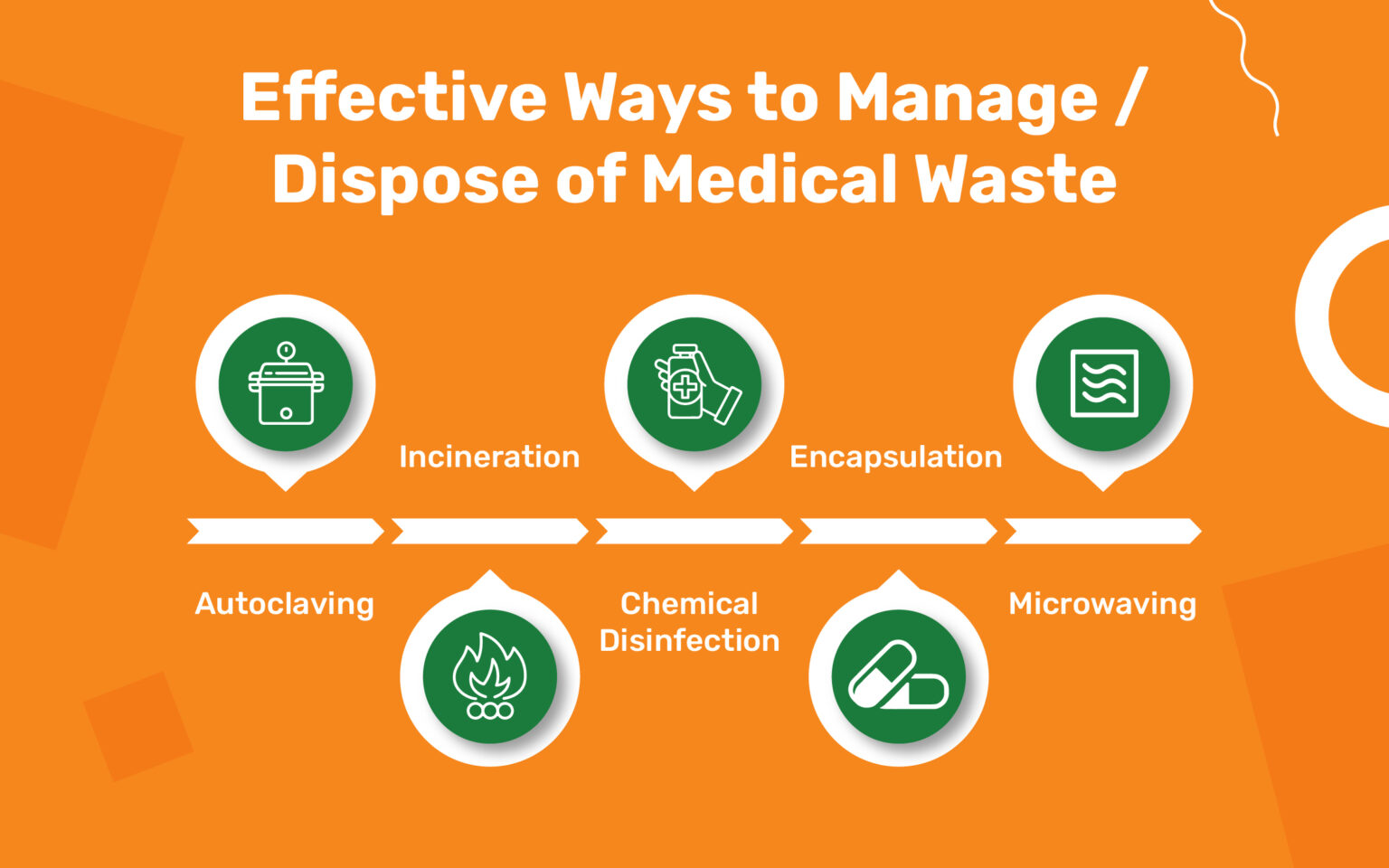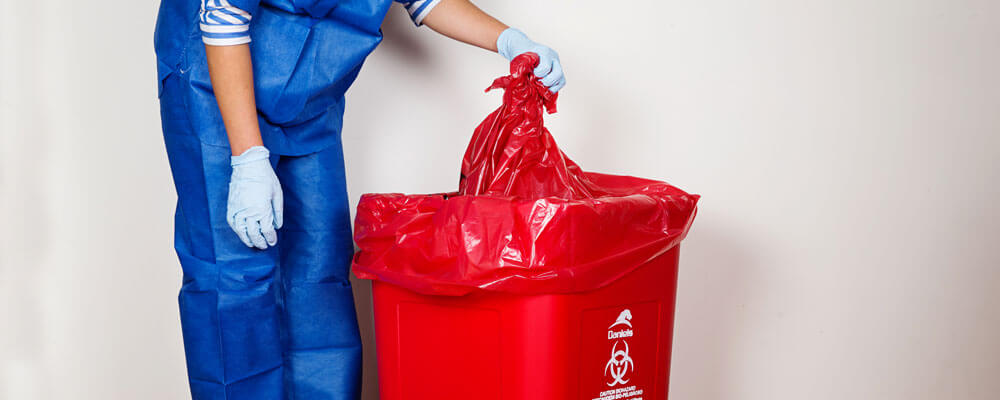Keep Ahead of Laws: Professional Guidance on Medical Garbage Disposal
In a globe where the healthcare market is regularly developing, it is critical for clinical centers to stay ahead of regulations when it involves the appropriate disposal of clinical waste. With strict standards and frequent regulatory changes, it can be challenging to navigate the complexities of this procedure. However, with experienced advice, facilities can ensure conformity and minimize dangers related to improper waste disposal. From understanding the different categories of medical waste to applying the right collection and partition methods, this discussion will give actionable pointers and important insights to assist centers remain ahead of policies in the ever-changing landscape of clinical garbage disposal.
Understanding Clinical Waste Categories
Comprehending medical waste groups is vital for proper disposal and administration in health care centers. Medical waste describes any waste created by health care activities that might pose a danger to public health and wellness or the setting. It is vital to classify medical waste accurately to guarantee its secure handling, therapy, transport, and disposal.
There are numerous groups of medical waste that healthcare facilities require to be knowledgeable about. One of the most usual groups consist of transmittable waste, pathological waste, sharps waste, pharmaceutical waste, and chemical waste. Each group has details guidelines and policies for its appropriate administration and disposal.
Infectious waste includes materials infected with blood or various other physical liquids, such as handwear covers, dress, and laboratory cultures. Pathological waste refers to human tissues, organs, or body parts that call for unique handling and disposal. Sharps waste includes made use of needles, syringes, and various other sharp objects that can cause injury and transfer infections. Pharmaceutical waste comprises run out, unused, or contaminated medicines that require careful handling and disposal. Last but not least, chemical waste includes solvents, disinfectants, and various other chemical compounds used in medical care facilities.
Remaining Up-To-Date With Regulatory Modifications
Staying present with regulatory changes is important for healthcare centers to ensure conformity and proper monitoring of clinical waste disposal. medical waste removal. With laws constantly developing, it is crucial for health care centers to stay current to prevent fines, fines, and potential injury to the atmosphere and public health
To remain in advance of regulative changes, health care facilities must develop a system for tracking and tracking updates. This can be done by signing up for regulative e-newsletters, participating in workshops and meetings, and proactively taking part in sector associations. Additionally, centers must designate a personnel member or group in charge of remaining informed and sharing information to relevant stakeholders.
Routine interaction with governing agencies is additionally vital. Medical care facilities need to develop connections with regional, state, and federal companies to ensure they are conscious of any adjustments in guidelines that may affect their waste management techniques. This can be done via regular meetings, involvement in public remark durations, and proactive involvement with regulatory agencies.
Moreover, healthcare centers should take into consideration partnering with waste management companies that specialize in medical waste disposal (medical waste disposal services with WasteX). These firms are often skilled in the most up to date laws and can offer support and support to ensure conformity
Implementing Correct Collection and Segregation Techniques
To efficiently take care of clinical garbage disposal, medical care facilities should develop proper collection and segregation techniques according to governing standards. Executing these methods guarantees the risk-free handling and disposal of potentially unsafe materials, shields the environment, and reduces the threat of injuries and infections to healthcare workers and the public.
Correct collection and segregation methods include the use of designated containers and identifying systems. Health care centers must provide clearly Homepage labeled containers for different kinds of clinical waste, such as sharps, transmittable waste, pharmaceutical waste, and non-hazardous waste. These containers ought to be color-coded and clearly marked to prevent complication and promote very easy identification.
Additionally, medical care facilities must educate their team on the proper procedures for accumulating and setting apart medical waste. This includes informing them on the various kinds of waste, the suitable containers to utilize, and the relevance of adhering to guidelines and regulations. Regular training sessions and correspondence course ought to be performed to make sure that employee continue to be updated on finest techniques.
In addition, medical care centers must develop a system for normal collection and disposal of clinical waste. This might include partnering with certified waste administration business that focus on clinical waste disposal. These firms will certainly make certain that the accumulated waste is transferred and thrown away in conformity with regulative demands.
Picking the Right Disposal Methods

Incineration is one of the most common and effective techniques for dealing with particular types of medical waste, such as pathological waste and sharps. It includes the controlled burning of waste at heats, lowering it to ash. Nonetheless, incineration can launch unsafe contaminants right into the air and contribute to air pollution.

Various other disposal approaches consist of chemical treatment, microwave treatment, and landfilling. Chemical therapy entails using chemicals to counteract the waste and disinfect. Microwave therapy utilizes microwave power to warm and disinfect the waste. Landfilling includes hiding the waste in a designated garbage dump location (medical waste disposal services with WasteX). However, landfilling needs to be the last option as a result of the possible risk of contamination to dirt and groundwater.
Guaranteeing Conformity With Paperwork and Training
After very carefully taking into consideration the appropriate disposal approaches for clinical waste, health care centers should make certain conformity with policies and lessen environmental influence by implementing effective paperwork and training treatments. This step is crucial in preserving a risk-free and sustainable setting for both healthcare workers and the general public.

Training is equally important in making sure conformity with guidelines. Medical care workers that take care of clinical waste must receive appropriate training on waste segregation, dealing with, and disposal procedures. This training should cover topics such as the appropriate use individual safety devices, recognition of various sorts of waste, and the right disposal approaches for each and every waste group. By supplying detailed training, medical care centers can empower their staff to make educated choices and lessen the threat of incorrect waste disposal.
Conclusion
In conclusion, remaining ahead of guidelines visit in clinical waste disposal is crucial for health care facilities. medical waste removal near me. Comprehending the different categories of medical waste, remaining upgraded with regulatory changes, implementing appropriate collection and segregation techniques, picking the suitable disposal approaches, and ensuring conformity through documents and training are all vital actions. By following these standards, healthcare organizations can properly take care of and get rid of of clinical waste in a responsible and secure manner
From comprehending the different categories of clinical waste to carrying out the best collection and partition approaches, this discussion will supply workable tips and valuable insights to assist facilities stay in advance of regulations in the ever-changing landscape of medical waste disposal. - medical waste disposal services with WasteX
The most usual classifications consist of transmittable waste, pathological waste, sharps waste, pharmaceutical waste, and chemical waste. Medical care centers ought to offer plainly classified containers for different kinds of medical waste, such as sharps, infectious waste, pharmaceutical waste, and non-hazardous waste. Health care centers should establish a detailed system to tape-record and track all facets of clinical waste disposal, consisting of kinds of waste generated, amounts, and disposal techniques used. Medical care workers that manage medical waste needs to receive suitable training on waste segregation, managing, and disposal procedures.